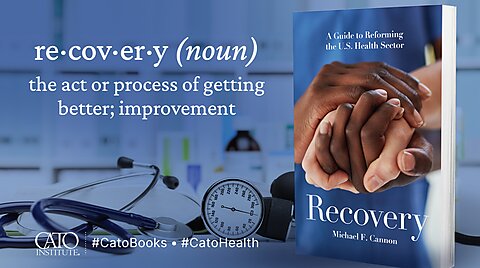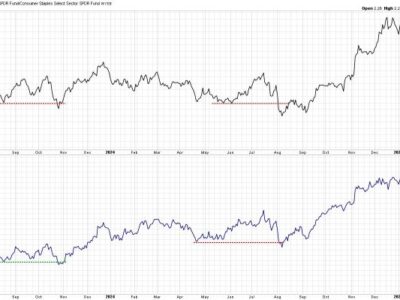
I am happy to announce the release of my latest book, Recovery: A Guide to Reforming the U.S. Health Sector.
If I have any notoriety in this crazy world, it is for the work I did trying to stop ObamaCare. For my pains, The New Republic called me “ObamaCare’s single most relentless antagonist.” Vox called me, “The man who could bring down ObamaCare.” The Week called me “ObamaCare’s fiercest critic.” The New York Post called me, “ObamaCare’s Enemy No. 1.” You get the idea. Most of the editors who wrote those things did not mean them as a compliment.
Unfortunately, in the United States’ hyper‐partisan political climate, this means that half of the country will be open to my new book while the other half will not. Doubly unfortunate, most people who work in health policy are in the second group.
Reader, if you are in that second group, I beseech you: give Recovery a chance. There may be more for you in this book than you might think. Recovery is fundamentally about making health care more universal and restoring your right to make your health decisions.
How so? Let’s start with a chart from the book. It may be the most important chart you will ever see in health policy.
The following chart shows the results of a series of experiments that several employers ran. An amazing thing happened in those experiments. Something you almost never see happening in health care: prices fell.
In these studies, employers tested an innovation that consistently and dramatically reduced health care prices, in a very short period, across a wide range of services. Those services included:
MRI scans
CT scans
Knee and shoulder arthroscopy
Cataract removal
Hip and knee replacement
Colonoscopy
Lab tests
For every one of these medical services, the innovation these employers tested caused prices to fall immediately and significantly—without denying medical care to anyone. Everyone got the care they needed. The innovation was even able to overcome the market power of monopolistic hospitals and get them to reduce their prices, too. The academics who published the results, including health economist James C. Robinson of the University of California‐Berkeley, believe this innovation could bring prices down even more than it did in these experiments.
For we supporters of universal health care, this is the best news you’ve ever heard and the most important chart you’ve ever seen. If you want health care to be universal, what you want more than anything is falling medical prices. Falling prices make health care more universal three times over:
They bring health care and health insurance within the reach of those who previously could not afford them. It thereby shrinks the number of people who cannot afford the medical care they need.
They reduce the cost of helping people who still cannot afford the care they need: that group is now smaller and health care prices are lower.
They leave the rest of us with more resources, because we too benefit from lower medical prices, making it easier for us to help that now‐smaller group of people.
If universal health care is your goal, falling prices—this chart—should be your obsession. It was not government programs that made food so universal that we are now keeping a record 8 billion humans alive on this planet. It was first and foremost falling food prices.
As always, there’s both good news and bad news here. The good news is someone discovered an innovation capable of overcoming the market power of monopolist providers to reduce prices to make health care more universal without denying care to anyone. The bad news is that this innovation is…giving people less health insurance.
The employers and insurers who ran these experiments noticed three things.
Providers charged wildly varying prices for certain services. Hospitals charged anywhere from $12,000 to $60,000 for hip and knee replacements, for example.
Those higher prices did not correlate with quality. They were pure exercises of hospitals’ market power.
For all their vaunted purchasing power, not even yuuuge insurance companies (e.g., Aetna) and employers (e.g., the State of California) could, for the life of them, negotiate those prices down.
The innovation those insurers and employers decided to test is something health wonks call a “reference price” or a “reverse deductible.” Those are needlessly dorky terms, though. All they mean is that the insurers told patients they could go to any hospital they wished for hip or knee replacements but the insurer would only pay $30,000. If their hospital charged $60,000, the patient would be on the hook for 100 percent of the difference. In other words, this innovation gave patients less insurance than they had before.
It therefore changed whose money was at stake. Instead of the insurance company being on the hook for prices in excess of $30,000, it was the patient’s money on the line. That change made patients care a lot more about prices than they do when they’re spending someone else’s money.
As a result of that one simple change, all sorts of amazing things happened. Things that definitely do not happen in health care. Because health care is a special sector of the economy. Where these things. Definitely. Do. Not. Happen.
Patients started demanding price information from hospitals.
Hospitals furnished patients with clear, useful price information. (Transparency!)
Patients responded to high prices by changing their behavior. Patients increased the market share of low‐price hospitals from one‐half to two‐thirds.
Hospitals responded by reducing the prices. (*Taps the chart.*) The chart shows average price reductions but high‐price hospitals reduced prices for hip and knee replacements by 37 percent—about $16,000 per procedure—over a two‐year period. Some hospitals approached insurance companies about reopening their contracts so they could reduce their prices.
Price‐sensitive consumers did what large employers and insurance companies—and for that matter, the Department of Justice—could not: they broke the monopolies. All without denying care to anyone.
There’s an important lesson here. In the United States, the pursuit of universal health care has largely taken the shape of having the government encourage more and more health insurance coverage. All sorts of government policies push in that direction. The tax exclusion for employer‐sponsored health insurance. State and federal laws requiring health insurance purchasers to buy “essential” types of coverage that they might otherwise not. Medicare. Medicaid. CHIP. HIPAA. ObamaCare. And all the while, we advocates of universal health care wonder why prices keep soaring.
Note that the experiments in this chart were pure austerity. All they did was take something away from patients: coverage of the cost of these services in excess of the reference prices. (Sorry, wonky, I know.) And yet, no one lost access to care. Everyone was fine. (Well, not everyone. Inefficient, price‐gouging, monopolistic providers lost market share. That’s a feature, not a bug.) The price reductions even reduced the cost of health insurance for every one of these patients’ coworkers.
Recovery does not advocate austerity or taking coverage away from consumers. It does not propose to have government mandate “This One Successful Innovation We Found.” Such a mandate wouldn’t work, anyway. The health care industry would hate it and spend tons of money lobbying against it. (Remember, this is the industry that for decades has led all other industries in lobbying expenditures.) The benefits would not be salient to workers and consumers, who would therefore be susceptible to industry fear‐mongering.
Recovery proposes to make health care more universal by letting consumers control the $4.7 trillion sloshing around in our high‐priced, wasteful U.S. health sector. That way, consumers can choose whether this type of insurance feature is right for them. It would do so by using traditionally Democratic “public option” principles to reform Medicare—which would put an end to how the pharmaceutical, hospital, and insurance industries have captured that program. And by discarding the worst parts and keeping the best parts of tax‐free health savings accounts.
Recovery further proposes to make health care more universal by eliminating barriers to proven ways of reducing the problem of preexisting conditions. And by eliminating barriers to nurse practitioners and other mid‐level clinicians. And by reducing barriers to women exercising their right to choose contraception. And by eliminating unwise medical malpractice liability “reforms.” And by improving care for veterans…
If you support universal health care and the right of patients to make their own health decisions, there might be more for you in Recovery than you might think. I hope you’ll give it a look.








